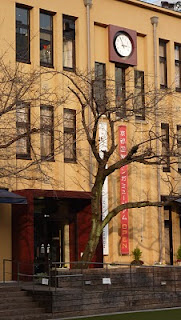
The city of Kyoto is proud of its municipal elementary school, founded three years before the government would introduce born of the Meiji Restoration in 1872, compulsory primary education. Their story is celebrated in the Kyoto Municipal School Museum, which occupies a wing in 1998 of the Elementary School Kaicho, coming off with the demographic decline of the nineties of the last century.
In 1869, the "elders" of Kyoto, concerned about the negative impact that the transfer of the capital city to Tokyo would have on the economy, "they thought it was important to educate the people to come back Kyoto rich ". Each family has a kitchen stove was asked for a donation to build a neighborhood school and districts that failed to collect the money a loan granted to the prefecture. Thus, 64 schools were born, nurtured that "the ideals of self-love and self-defense for the community" and revitalize traditional arts and handicrafts.
The museum is not allowed to take photographs, but the memorabilia on display are visible on the site http://kyo-gakurehaku.jp
Among the items collected, there are the subsidiary of the thirties that exude nationalism and militarism and those of the fifties censored by the U.S. occupiers. There is a portrait of Genz Shimadzu, founder of Shimadzu Corp., which produces precision instruments industry, the pride of the city, especially since 2002, when his researcher Koichi Tanaka won the Nobel Prize for Chemistry.
In another elementary school born in 1869 and has not been used in the nineties, the Tatsuike, was opened in November 2006, the Kyoto International Manga Museum. The idea was born at Kyoto Seika University, which since 2001 has an Institute for Research on Manga ( http://imrc.jp ) since 2006 and a Faculty Manga.
In Japan, comics are no longer considered a subculture, but recognized as a strategic industry. Their international success since the early eighties, and the consequent possibility of market expansion, have made it the definitive institutionalization, in 2000, the Ministry of Education has formalized entry into the curricula of art schools.
The museum, next to the collection and preservation, is proposed as a center for research, studies and training in a position to "create culture and industrial development" and "promote tourism". His ambitious vision is evident in the diagram that appears on its website at
0 comments:
Post a Comment